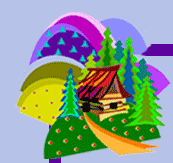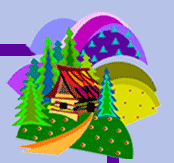GREETINGS, FEEL FREE
TO
"SHOP NAKED."©

We deal in items we believe others will enjoy and want to purchase.
We are not experts.
We welcome any comments, questions, or concerns.
WE ARE TARGETING A GLOBAL MARKET PLACE.
Thanks in advance for your patronage.
Please Be sure to add WDG to your favorites list!
NOW FOR YOUR VIEWING PLEASURE…
TWO PACKS OF SOUVENIR
RPPC
VINTAGE REAL PHOTO POSTCARDS
MADE IN CANADA BY
THE GOWEN SUTTON COMPANY LTD
VANCOUVER, BRITISH COLOMBIA (BC)
SEPIA TONE IMAGES DEPICT
THE JASPER AND BANFF NATIONAL FORREST
IN ALBERTA CANADA
ORIGINALLY .25 CENTS
THE BLACK & WHITE IMAGES INCLUDE:
MT HECTOR
LOG CABIN
HIGHWAY 1, BANFF TO JASPER ROAD
PEYTO PEAK & GLACIER
ATHABASCA RIVER & MT. HARDESTY
UPPER WATERFOWL LAKE
MALIGNE CANYON
UPPER FALLS, MALIGNE CANYON
SUNWAPTA CANYON
PYRAMID LAKE AND MOUNTAIN
PEYTO LAKE
MT EDITH CAVELL
AMETHYST LAKE & RAMPARTS
CHROME LAKE VALLEY
BOTH PACKS HAVE BEEN MAILED
ADDRESSED TO SUE HOWARD & TO DAVID HOWARD.
ALL CARDS HAVE CHILDS NAME WRITTEN IN PENCIL ON BACK
COULD BE ERASED.
.3 CENT POSTAGE
CIRCA 1962, POSTMARK
FROM CANADA TO THE USA
POCKET SIZE MOMENTO MEASURES ABOUT 12cm X 7cm
(13) THIRTEEN CARDS
----------------------------------------------
FYI
Jasper is a specialized municipality in western Alberta, Canada. It is the commercial centre of Jasper National Park, located in the Canadian Rockies in the Athabasca River valley.
Jasper is 362 kilometres (225 mi) west of Edmonton. Jasper is 290 kilometres (180 mi) north of Banff, Alberta, with the Icefields Parkway connecting the Jasper townsite to Lake Louise in Banff National Park. It was established as a specialized municipality on July 20, 2001 and the governance of Jasper is shared between the Municipality of Jasper and the federal Parks Canada agency.
History
Established in 1813, Jasper House was first a North West Company, and later Hudson's Bay Company, fur trade outpost on the York Factory Express trade route to what was then called "New Caledonia" (now British Columbia), and Fort Vancouver in Columbia District on the lower Columbia River.
Jasper National Park was established in 1907. The railway siding at the location of the future townsite was established by Grand Trunk Pacific Railway in 1911 and originally named Fitzhugh after a Grand Trunk vice president (along the Grand Trunk's "alphabet" line). The Canadian Northern Railway also began service to Fitzhugh in 1912. The townsite was surveyed in 1913 by H. Matheson, and subsequently renamed Jasper after the former fur trade post. By 1931, Jasper was accessible by road from Edmonton, and in 1940 the scenic Icefields Parkway opened, connecting Banff and Jasper.
Jasper National Park is the largest national park in the Canadian Rockies, spanning 10,878 km² (4200 mi²). It is located in the province of Alberta, north of Banff National Park and west of the City of Edmonton. The park includes the glaciers of the Columbia Icefield, hot springs, lakes, waterfalls and mountains. Wildlife in the park includes elk, caribou, moose, mule deer, white-tailed deer, mountain goat, bighorn sheep, grizzly bear, black bear, beaver, Rocky Mountain pika, hoary marmot, grey wolf, mountain lion, and wolverine.
History
Jasper was named after Jasper Hawes, who operated a trading post in the region for the North West Company. Before this it was referred to as Fitzhugh. The park was established on September 14, 1907 as Jasper Forest Park, and was granted national park status in 1930, with the passing of the National Parks Act.
In 2011, Jasper National Park had 1,916,677 visitors.
World Heritage Site
This park was declared a UNESCO World Heritage Site in 1984, together with the other national and provincial parks that form the Canadian Rocky Mountain Parks, for the mountain landscapes containing mountain peaks, glaciers, lakes, waterfalls, canyons, and limestone caves as well as fossils found here.
Attractions
Some of the park's scenic attractions include Mount Edith Cavell, Pyramid Lake with Pyramid Mountain, Maligne Lake, Medicine Lake, and the Tonquin Valley. Other attractions are the Marmot Basin ski area; the Snocoach tours of the Athabasca Glacier, an outlet glacier of the Columbia Icefield; Athabasca Falls; Whistler Sky-Tram, the Jasper Tramway, and numerous other outdoor related recreational activities (such as hiking, fishing, wildlife viewing, rafting, kayaking and camping). The Miette Hot Springs are located close to the northeast entrance. The Miette Hot Springs are created by an extremely hot spring cooled by the mountain to temperatures suitable for humans.
The Icefields Parkway is a highway 230 km (140 mi) in length from Lake Louise, Alberta in Banff National Park, to Jasper, Alberta. The highway parallels the continental divide, providing motor and cycle access to the mountains. The Athabasca and Sunwapta Falls are both accessible by the road.
In popular culture
Jasper National Park is featured in the 2010 3D animated comedy-drama film, Alpha and Omega, as the location of where the two protagonists, live in, and attempt to return to.
Banff National Park is Canada's oldest national park, established in 1885 in the Rocky Mountains. The park, located 110–180 km (68–110 mi) west of Calgary in the province of Alberta, encompasses 6,641 km2 (2,564 sq mi) of mountainous terrain, with numerous glaciers and ice fields, dense coniferous forest, and alpine landscapes. The Icefields Parkway extends from Lake Louise, connecting to Jasper National Park in the north. Provincial forests and Yoho National Park are neighbours to the west, while Kootenay National Park is located to the south and Kananaskis Country to the southeast. The main commercial centre of the park is the town of Banff, in the Bow River valley.
The Canadian Pacific Railway was instrumental in Banff's early years, building the Banff Springs Hotel and Chateau Lake Louise, and attracting tourists through extensive advertising. In the early 20th century, roads were built in Banff, at times by war internees, and through Great Depression-era public works projects. Since the 1960s, park accommodations have been open all year, with annual tourism visits to Banff increasing to over 5 million in the 1990s. Millions more pass through the park on the Trans-Canada Highway. As Banff is one of the world's most visited national parks, the health of its ecosystem has been threatened. In the mid-1990s, Parks Canada responded by initiating a two-year study, which resulted in management recommendations, and new policies that aim to preserve ecological integrity.
Banff is a town within Banff National Park in Alberta, Canada. It is located in Alberta's Rockies along the Trans-Canada Highway, approximately 126 km (78 mi) west of Calgary and 58 km (36 mi) east of Lake Louise. At an elevation of 1,463 m (4,800 ft), Banff is the community with the second highest elevation in Canada after Lake Louise.
The Town of Banff is the first municipality to incorporate within a Canadian national park. The town is a member of the Calgary Regional Partnership.
Banff is a resort town and one of Canada's most popular tourist destinations, known for its mountainous surroundings and hot springs. It is a destination for outdoor sports and features extensive hiking, biking, scrambling and skiing areas within the area. Sunshine Village, Ski Norquay and Lake Louise Mountain Resort are the three nearby ski resorts located within the national park.
Banff was first settled in the 1880s, after the transcontinental railway was built through the Bow Valley. In 1883, three Canadian Pacific Railway workers stumbled upon a series of natural hot springs on the side of Sulphur Mountain. In 1885, Canada established a federal reserve of 26 km2 (10 sq mi) around the Cave and Basin hot springs, and began promoting the area as an international resort and spa as a way to support the new railway. In 1887, the reserve area was increased to 673 km2 (260 sq mi) and named "Rocky Mountain Park." This was the beginning of Canada's National Park system.
The area was named Banff in 1884 by George Stephen, president of the Canadian Pacific Railway, recalling his birthplace in Banffshire, Scotland. The Canadian Pacific built a series of grand hotels along the rail line and advertised the Banff Springs Hotel as an international tourist resort.
The Banff townsite was developed near the railway station as a service centre for tourists visiting the park. It was administered by the Government of Canada's national parks system until 1990 when the Town of Banff became the only incorporated municipality within a Canadian national park.
In 1985, the United Nations declared Banff National Park, as one of the Canadian Rocky Mountain Parks, a World Heritage Site. Banff remains one of the most popular tourist destinations in Canada.
One of the most notable figures of Banff was Norman Luxton, who was known as "Mr. Banff". He published the Crag and Canyon newspaper, built the King Edward Hotel and the Lux Theatre, and founded the Sign of the Goat Curio Shop, which led to the development of the Luxton Museum of Plains Indians, now the Buffalo Nations Museum. He and his family helped organize the Banff Indian Days and the Banff Winter Carnival.
In 1976, the International Astronomical Union's Working Group for Planetary System Nomenclature (IAU/WGPSN) officially adopted the name Banff for a crater on Mars, after the town in Alberta. The crater is at latitude 17.7° north and longitude 30.8° west. Its diameter is 5 km (3.1 mi).

(THIS PICTURE FOR DISPLAY ONLY)
---------------------------
Thanks for choosing this sale. You may email for alternate payment arrangements. We combine |

